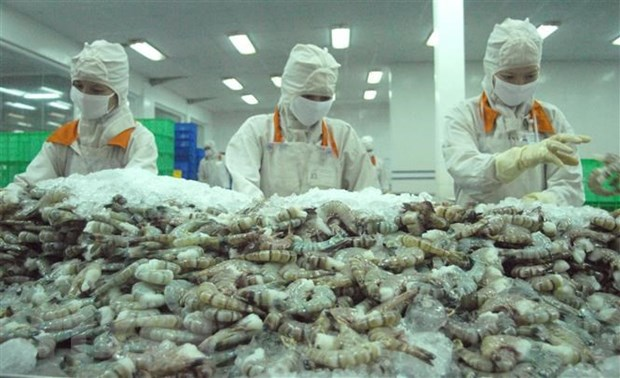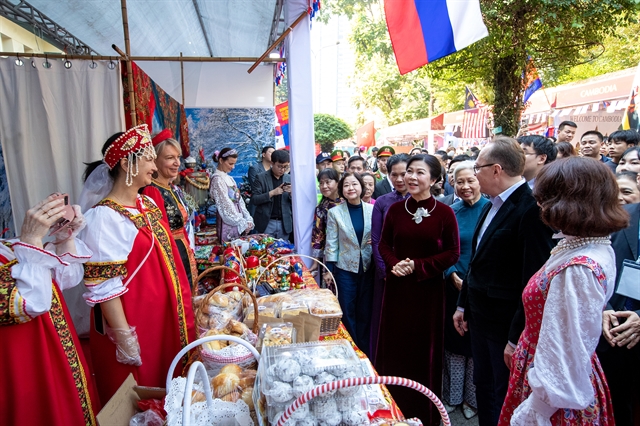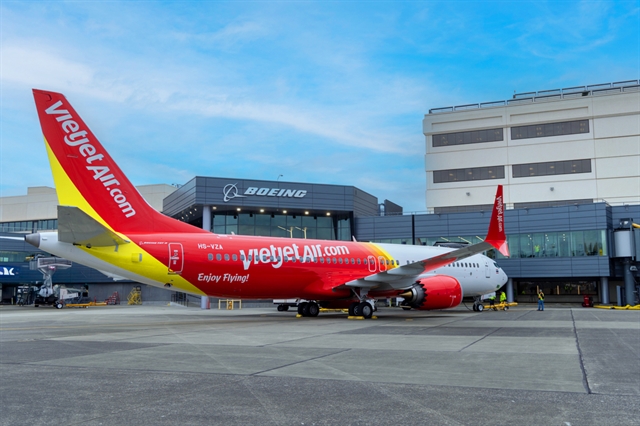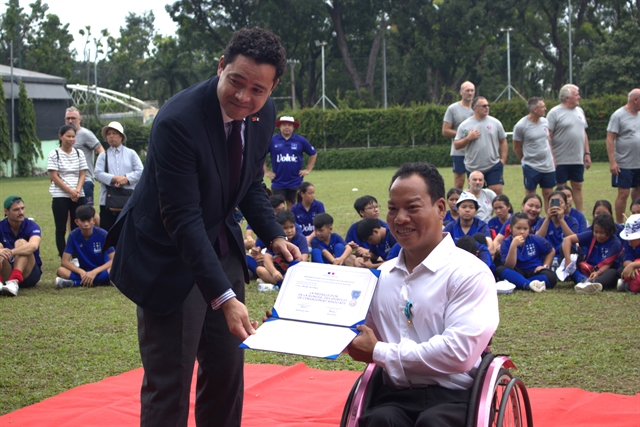 Society
Society

Construction of key projects enhancing air connectivity between HCM City and areas in the southern key economic zone needs to begin on time to avoid financial losses, experts have said.
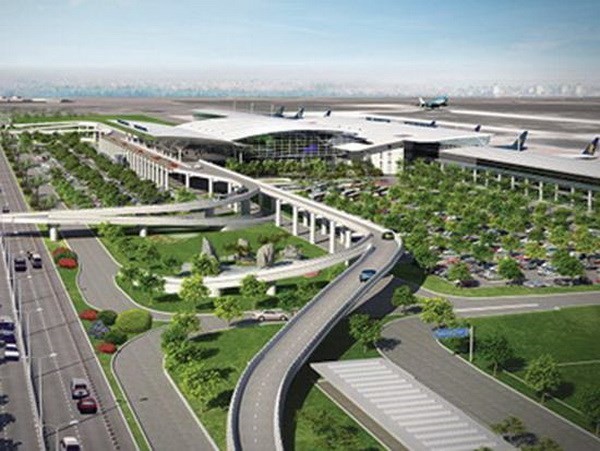
|
| Construction of Long Thành International Airport project in Đồng Nai Province is running behind schedule due to slow land clearance. — VNA/VNS Photo |
HCM CITY — Construction of key projects enhancing air connectivity between HCM City and areas in the southern key economic zone needs to begin on time to avoid financial losses, experts have said.
The new passenger terminal T3 at Tân Sơn Nhất International Airport in HCM City is expected to start in December, but its investor - the State-run Airports Corporation of Việt Nam (ACV) - said it was still waiting for 16ha of vacant land required for the project managed by the Ministry of National Defence.
Meanwhile, construction of component projects of Long Thành International Airport project in Đồng Nai Province, a national key project, is three to six months behind schedule.
By 2025, the new airport is expected to relieve overloading at the Tân Sơn Nhất International Airport.
Đỗ Tất Bình, deputy director of ACV, said that construction of passenger terminal T3 of Tân Sơn Nhất International Airport might lag behind schedule.
The defence ministry has completed a plan to hand over the 16ha area in Tân Bình District, and is waiting for a decision from the municipal People’s Committee, but ACV has not yet received a response in writing from the People's Committee, reported the Tuổi trẻ (Youth) newspaper.
After the decision is made, new procedures will take a lot of time, at least the next six months.
“Due to the urgency of the project, authorised agencies should hand over the land to soon start construction first, and the procedures can be finished later,” Bình said.
The new passenger terminal T3 project has total investment capital of nearly VNĐ11 trillion (US$483.5 million) and is expected to be completed within 37 months.
The new terminal will serve 20 million passengers per year and help to reduce the load on Tân Sơn Nhất Airport.
“If the project is delayed for even one year, thousands of billions of Vietnamese đồng would be lost,” Bình said.
When the pandemic is under control, the demand for travelling abroad will be high and will put pressure on Tân Sơn Nhất Airport, Trần Du Lịch, a member of the Prime Minister's economic advisory group, said.
By 2025, Tân Sơn Nhất International Airport will still play a very important role in contributing to the city’s economic recovery and the country’s development.
It will still handle 45 million passengers a year even when the new Long Thành Airport is officially put into operation.
Long Thành will accommodate 80 per cent of international visitors and 20 per cent of domestic visitors, while Tân Sơn Nhất will carry 20 per cent of international tourists and 80 per cent of local tourists to the city.
“The new passenger terminal must be built to increase the service capability of Tân Sơn Nhất International Airport as soon as possible, and we should not wait for the Long Thành International Airport to be completed,” Lịch said.
Nguyễn Thiện Tống, an aviation expert, said the expansion of Tân Sơn Nhất International Airport is designed in sync with the construction of Long Thành International Airport.
“Therefore, it is impossible to delay completion of the facilities at the two airports, because this is considered as an airport cluster, not a separate project serving specific needs of each area,” he said.
The delay in administrative procedures is one of the causes for the slow construction progress of Terminal T3 project.
“Relevant authorities need to have solutions to remove obstacles from legal procedures to speed up construction of the new terminal,” he said.
Lê Văn Tiếp, chairman of Long Thành District’s People’s Committee in Đồng Nai Province, said the implementation of social distancing measures in the fight against COVID-19 has affected progress in land clearance, compensation and resettlement for affected households.
Around 3,800ha of 5,000ha of total land area required for the new airport project have been handed over by local authorities.
There also have slow construction works of resettlement areas in Lộc An and Bình Sơn communes.
“The procedures for transferring licences and land use rights of more than 900 cases have not yet been completed, which is one of the biggest problems we are facing now,” Tiếp said.
The province is setting up a working group to remove problems in site clearance compensation and other issues.
The central budget has allocated 100 per cent of the total investment capital of VNĐ22.85 trillion (about $1 billion) for the new airport project, but the disbursement is low compared with schedule, reaching only 47 per cent of the total investment capital.
The province has proposed that the Government make adjustments to its feasibility study report on the Long Thành International Airport project, aiming to save more than VNĐ4.1 trillion ($180.3 million) but still ensuring good living conditions for residents moving into resettlement areas.
It also asked to be allowed to use the savings for building a new six-lane provincial highway which will connect National Highway No 51 and the Long Thành International Airport’s back gate at a cost of VNĐ7 trillion ($307.8 million).
Lương Minh Phúc, head of the HCM City Management Board for Traffic Works Construction and Investment, said the unit in collaboration with the city’s Department of Transport and authorities of Tân Bình District are preparing to begin construction of several traffic infrastructure works to ease congestion in areas around the Tân Sơn Nhất airport and link with the new Teminal T3.
Construction of a new road connecting Trần Quốc Hoàn and Cộng Hòa streets in Tân Bình District is expected to start in the first quarter next year and to be completed within 18 months.
It also includes building two underpasses at Phan Thúc Duyện - Trần Quốc Hoàn and Trường Chinh - Tân Kỳ Tân Quý intersections and an overpass in front of the new terminal.
Hoàng Hoa Thám and Tân Kỳ Tân Quý streets and a section of Cộng Hòa Street will be upgraded and expanded, with investment costs of hundreds of billions of đồng. — VNS

.jpg)
